Nasturtium is one of the most recognizable flowering plants, belonging to the Tropaeolum genus and the Tropaeolaceae family. The flowers are intensely bright in color with a five-petal flower head and rounded shield-like leaves. Nasturtium plants are easy to grow and versatile in their uses, from keeping garden pests away to medicinal uses and being a unique food staple. These herbaceous flowering plants belong to a genus of roughly eighty species of annual and perennial plants. The photos below are of an annual variety.
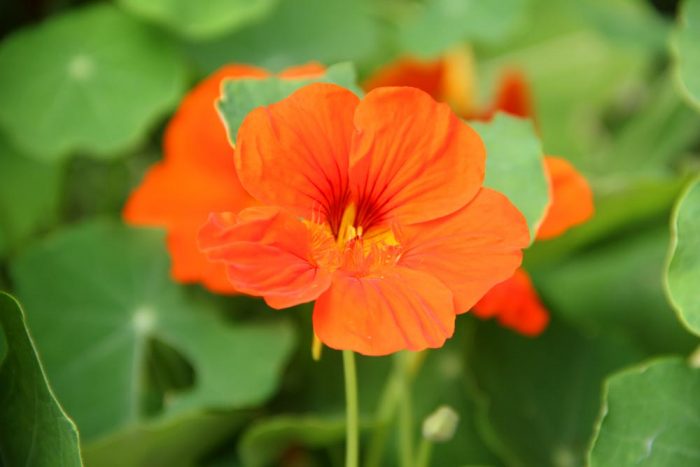
A bright orange nasturtium flower growing in the flower garden.
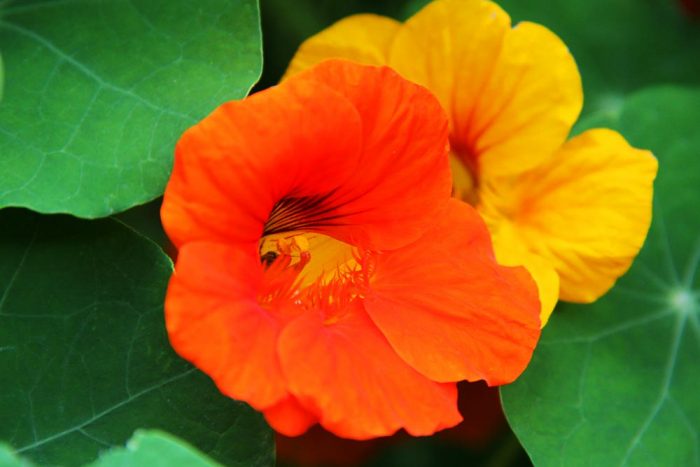
One orange and one yellow nasturtium flower.
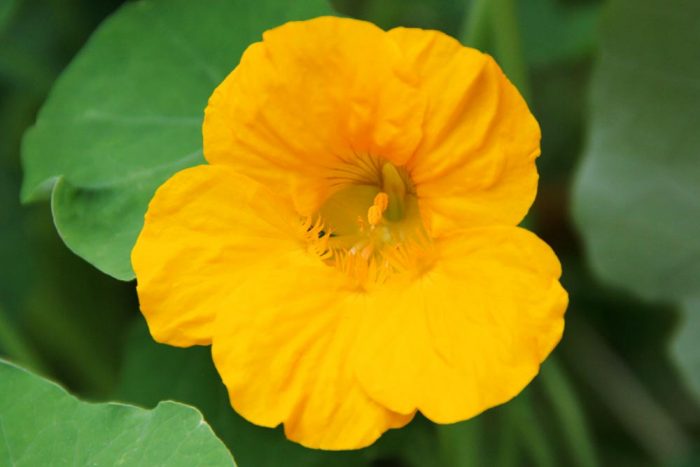
A single yellow nasturtium flower.
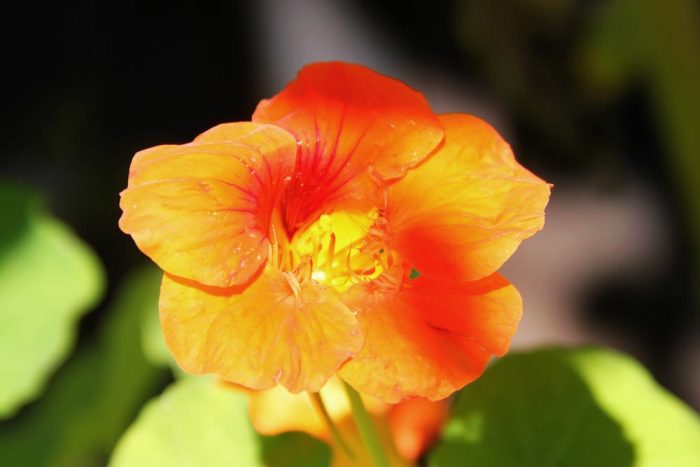
A yellow and orange nasturtium perennial flower.
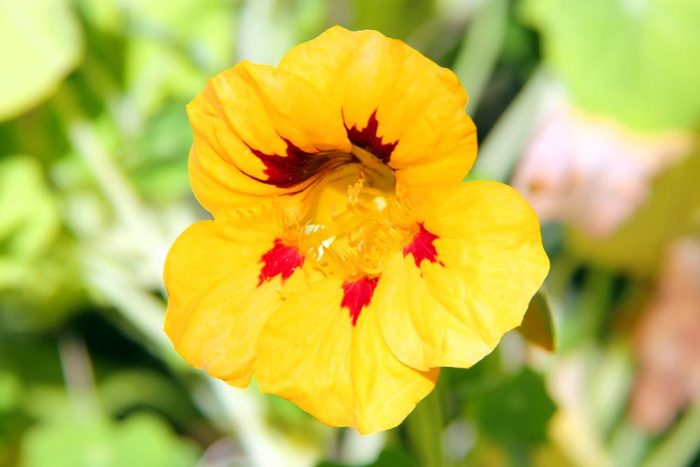
A single yellow nasturtium bloom.

A yellow and orange nasturtium flower with raindrops on its petals.
Recently, I planted nasturtium outside of one of my raised garden beds, where I like to plant zucchini and cucumbers. Every summer, squash bugs (Anasa tristis), as well as the striped cucumber beetle Acalymma vittatu, invade my garden and as a result, the leaves of my garden plants are decimated. I have tried remedies such as diatomaceous earth and neem oil and I haven’t had much luck in deterring these pesky insects…until now!
After doing some reading, I found that using nasturtium makes a good companion plant for zucchini since they trap insects like aphids, flea beetles, and whiteflies. They can also repel squash bugs and squash vine borers. These flowers are also beneficial for pollination since they attract bees and butterflies. They are also low-maintenance flowers and do not require much water.
Not everyone agrees with this practice, as nasturtium can also attract insects that will feed on your growing vegetables. Some garden pests love nasturtium and they prefer them over vegetables. Not to worry though, there are a couple of ways to use nasturtium as a trap crop. You can stick to the growing nasturtium in close proximity to your garden as previously mentioned or another trick for using trap crops is to plant sacrificial nasturtium safely away from your garden. This may help deter these insects from invading your vegetable garden.
I’m happy to report after planting these flowers right outside of my vegetable garden, I did not see any insects whatsoever. No brown or damaged leaves, allowing for a prolific year for my zucchini and cucumbers. If you find this option doesn’t work for you, you can always try planting sacrificial nasturtium farther away from your precious plants.
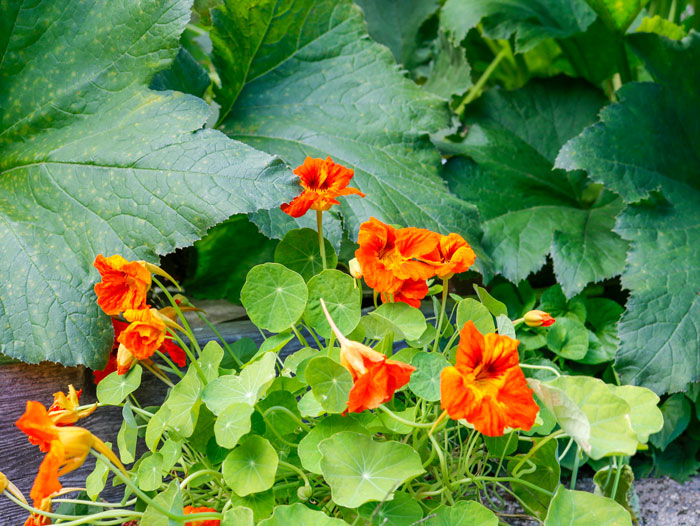
Now that the growing season is over, I have collected the seeds for the fall. I plan to plant them next spring and hopefully, I have seen the last of my insect problem in my vegetable garden.
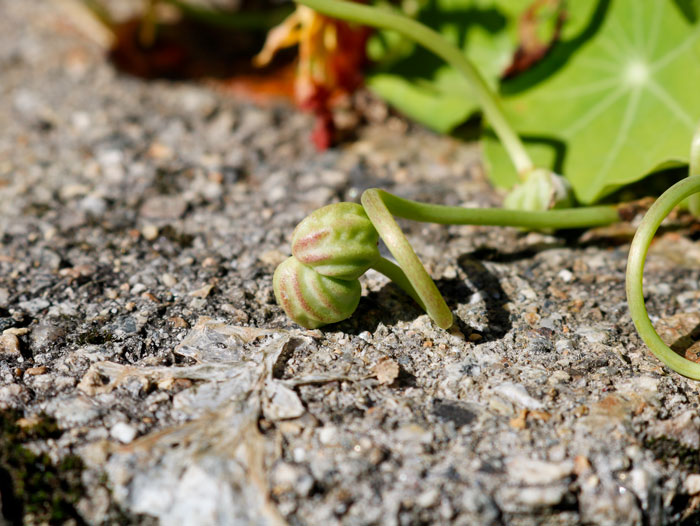
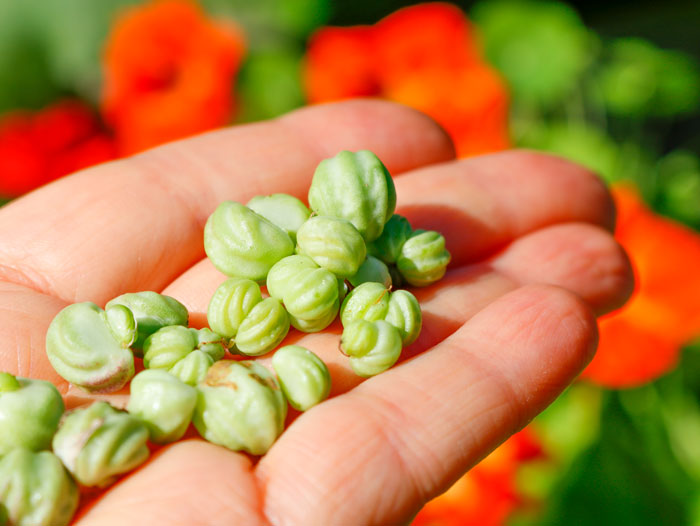
Nasturtium is beautiful and always brings vibrant color to the yard. Hopefully, you will also give this a try, and please let me know if you have any luck with planting nasturtium as well.
Leave a Reply